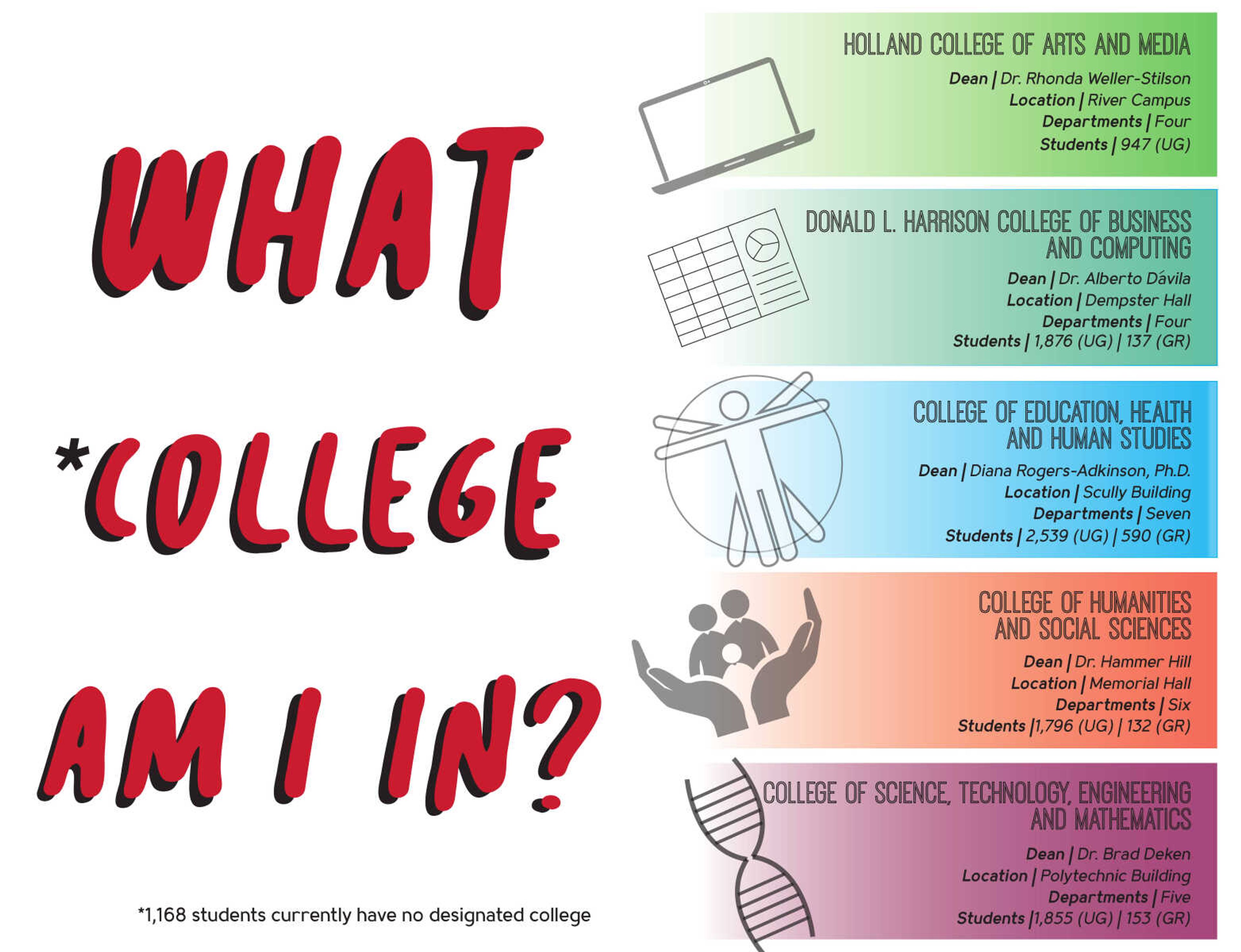This semester marks the first under the university’s restructuring of colleges, which took effect Aug. 1, in response to statewide base funding cuts for higher education totalling more than $1 million.
According to Finance and Administration vice president Kathy Mangels, the university realized $566,708 in reduced salary and benefit costs from the implementation of the academic restructuring.
Five newly established colleges were approved May 11 by the Board of Regents after a year long process that included some 100 meetings to review initial proposals and 80 letters of feedback from the Southeast community.
There are currently 1,168 students with no designated college, according to information provided by custodian of records Chris Martin.
On Aug. 27 interim provost Tamela Randolph sent personalized emails to all students who are designated to a college, to inform them on pertinent information, including academic department, college and dean of that college for the corresponding degree program.
Additionally, Randolph assured students in her email that the “changes will allow our programs to better position themselves for 21st century learning and move the University forward.”
All accreditations, she wrote, current courses, options and programs are maintained under the new alignment. She also stated that degree programs will not change.
According to Randolph, the 1,168 students who are not designated to a college did not receive an email from the interim provost, but students with exploratory and general studies degrees were informed of their college.
In an Aug. 23 interview, Randolph said she felt the university was in good shape compared to other in-state universities. She also noted that although a number of base budget cuts were made, there are more that still need to be made in order to replenish savings.
“I think the last budget crisis hit us pretty hard,” Randolph said. “I don’t think anybody in higher education was ready for it.”
Moving forward, Randolph said, the university’s primary objective is to evaluate how the changes are affecting members of the Southeast community — ensuring a fair and equitable workload for faculty and staff, and a sense of value for the student body.
The newly finalized college and department designations are as follows:
The College of Education, Health and Human Studies (2,539 undergraduate students, 590 graduate students):
-Child and Family Studies
-Communication Disorders
-Elementary, Early and Special Education
-Health, Human Performance and Recreation
-Leadership, middle and Secondary Education
-Nursing
-Psychology and Counseling
The College of Humanities and Social Sciences (1,796 undergraduate students, 132 graduate students):
-Communication Studies and Modern Languages
-Criminal Justice, Social Work and Sociology
-English
-History and Anthropology
-Political Science, Philosophy and Religion
The College of Science, Technology, Engineering and Mathematics (1,855 undergraduate students, 153 graduate students):
-Agriculture
-Biology
-Chemistry and Physics
-Engineering and Technology
-Mathematics
The Harrison College of Business and Computing (1,876 undergraduate students 137 graduate students):
-Accounting, Economics and Finance
-Computer Science
-Management
-Marketing
The Holland College of Arts and Media (947 undergraduate students):
-Art and Design
-Mass Media
-Music
-Theatre and Dance






